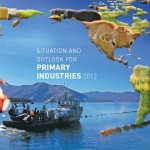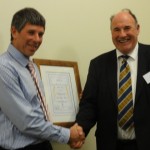The latest figures from Statistics NZ show a glimpse of improvement in economic activity, with a rise in gross domestic product (GDP) of 1.1 percent in the first three months of 2012, helped in part by primary food manufacturing, including meat. However, economists say it won’t necessarily result in a cut to New Zealand’s OCR anytime soon and the NZ government is intending to continue on its current course.
Compared with the March 2011 quarter, economic activity in the March 2012 quarter was up 2.4 percent. For the year ended March 2012, economic activity was up 1.7 percent compared with the year ended March 2011.
The main contributors to the increase were: manufacturing (1.8 percent), primarily primary food manufacturing and metal product manufacturing;agriculture (up 2.3 percent) mainly driven by an increase in milk production; and business services (up two percent), which include professional, scientific, technical, administrative and support services.
“Continued good growing conditions have been a major factor in the growth this quarter and it is reflected in both the milk production in agriculture and in meat and dairy manufacturing,” says Statistics NZ’s national accounts manager Rachael Milicich.
The expenditure measure of GDP was up 0.8 percent in the March 2012 quarter, due mainly to investment in fixed assets, a $416 million build up in inventories as supplies of goods produced exceeded demand and a small increase in the volume of spending by NZ households.
Picking up the pace, “right on cue”
Westpac economists say the bottom line is that the pace of growth is picking up in 2012 “right on cue after a prolonged recession an the disruption of several earthquakes.” Senior economist Michael Gordon comments, however: “The composition of growth is likely to change in coming quarters, as exports slow and reconstruction activity picks up, but we are on track for an acceleration in overall activity this year.”
He says interest rate markets are now pointing to a one-third chance of an OCR cut later this year. “We broadly agree with this pricing, although we don’t think today’s figures really shifted the odds much – the Reserve Bank made it clear in its June Monetary Policy Statement that the case for cutting rates depends on a nasty turn of events in Europe.”
While the figures represent a major upside surprise to RBNZ’s forecast of 0.4 percent growth, Westpac thinks that today’s result will not prompt the RBNZ into raising interest rates any sooner than it was already intending.
The government is maintaining its firm hand on the tiller. While the economy grew more strongly than expected in the quarter “despite ongoing economic and financial uncertainty in other parts of the world,” Finance Minister Bill English says: “What’s important for the Government is taking a long-term view of building New Zealand’s competitiveness and productivity, which will help us deal with headwinds from the uncertain global environment. That’s the focus of our economic plan.”








